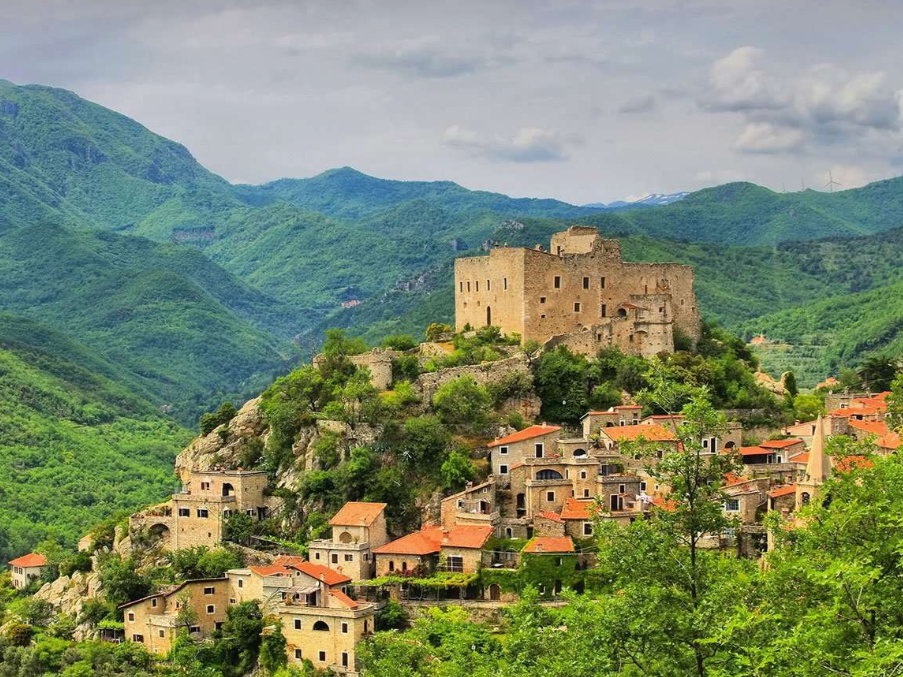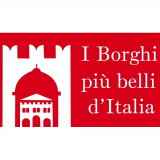
 I borghi più belli d'Italia
I borghi più belli d'Italia
Italian little Italies: Castelvecchio di Rocca Barbena, the sentinel village of the Neva Valley
- WTI Magazine #169 Nov 17, 2023
-

 I borghi più belli d'Italia
I borghi più belli d'Italia
Castelvecchio is the first and most beautiful of the walled villages of Val Neva, wrapped in a circle around the castle that dominates it. The castle was built by the Clavesana family in the 11th century, when the place was still called Vallis Cohedani, a mysterious toponym that identified one of the main "salt routes," capable of connecting the Piedmont plain with western Liguria through the exchange of oil, wine, grain, and timber.
Having obtained the imperial investiture of the fief, the Del Carrettos stamped Castelvecchio with themselves, as did this whole part of Liguria. The castle reflects the character of this proud mountain nobility that stood up to far more powerful neighbors such as the Savoy and the Republic of Genoa.
It is accessed by climbing the narrow, winding lanes that branch off from the main carruggio. The family that inhabits it today is responsible for the conservative interventions that have brought it back to life.
The village is characterized by its old stone houses, tufa portals, terraced roofs and arched attics (vîsà) in which figs and mushrooms were dried, the silhouettes of the ovens protruding from the walls of the houses, where bread was baked for the community, and the white frames on the windows, which recall motifs from the Alpine-Provençal area. The fortress houses, connected by arches in an earthquake-proof function on the inner streets, are reconciled with the Mediterranean look of the terraced roofs, which perhaps preserve the memory of their origins: the first inhabitants apparently came up here from the coast to escape Saracen raids. Among the houses perched on the castle slopes is the one in which Björn Afzelius composed his songs.
The Church of the Assumption, although it underwent renovations in the Baroque period, retains the spired bell tower of the original building. Overlooking Tower Square, where the gallows once stood, is the Oratory of the Disciplinants. From the road leading to the cemetery you can reach the knoll on which the shrine of Our Lady of Grace (17th cent.) is built. From here the view of the village and the landscape, dominated by cultivated strips near the houses, is very beautiful.
Scattered over the municipal territory are old farmsteads, once the marquis's possessions and now mute witnesses to peasant labors.
Castelvecchio is part with other municipalities in the area of the Poggio Grande environmental system.
Paths and mule tracks branch off from the town center and soon lead to chestnut woods and dense olive groves, allowing you to move from the Mediterranean scrubland to the 1,000 m altitude, where green pastures crown splendid beech forests. The village is included in the territory's main ecotourism routes.
Of naturalistic interest are the wild rocks of Rocca Barbena, while beyond the pass the springs of the Bormida River can be seen. In an hour and a half on foot you can reach, via the "path of Ilaria," the ancient village of Zuccarello, dominated by the ruins of the castle where Ilaria Del Carretto was born.
Here the Neva River is crossed by an admirable Romanesque humpback bridge. Also worth a visit on the "Terre Alte trail" are the villages of Toirano and, above all, Balestrino.
Finally, only 16 km away, there is the sea for those who would like to go swimming and diving in the blue. In Albenga you must visit the historic center and the walled village of Villanova.
Castelvecchio is located on the Wine and Oil Road from the Alps to the Sea. Therefore, the extra virgin oil of "primo roggio," the result of the cold pressing of olives, often carried out with heavy stone grinders, is the main product of the Ligurian hinterland that corresponds to the district of the Ingauna mountain community. As well, of course, as wine, which here can take on the heady nuances of Pigato (a great native grape variety) or the delicate scent of Vermentino, or even the blackberry and cherry scent of Ormeasco, exclusive to the Arroscia valley. Finally, not to be forgotten are the aromatic herbs in which the Ingaune valleys are rich.